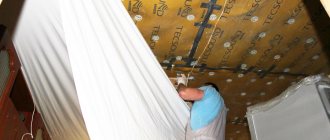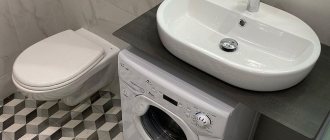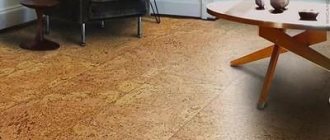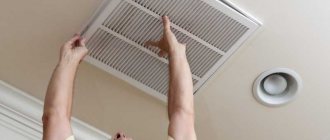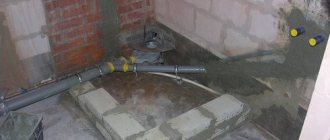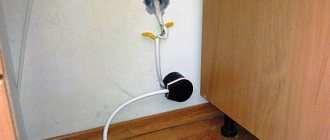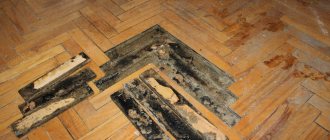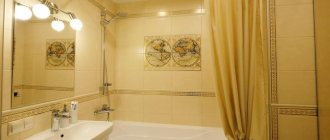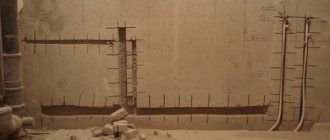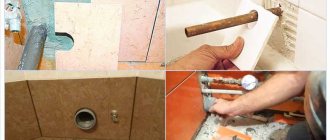Noise from neighbors and from the street often becomes an important problem - it can spoil your mood, or even worsen your well-being. According to polls, it interferes with up to 65% of Russians. It is not easy to protect yourself from it - for sound insulation to be reliable, you need to be well prepared, know what types of noise there are, and what is more effective to do against each of them.
Next we will talk about protection from impact noise on the walls - this is a very common irritant in apartments where there are neighbors on all sides, and not all of them are usually quiet. It will be discussed: what sound insulation is, types of noise, features of sound insulation of walls and preferred materials, as well as the actual stages of work.
Noises and sounds
Let's define the terms that are used in this article.
In physics, sound is understood as the propagation of elastic mechanical vibrations in a solid, liquid or gaseous medium.
The pitch of the sound is determined by the frequency of vibration. The human ear perceives sounds with frequencies ranging from 16 Hz (low) to 20 kHz (high). Sounds with a frequency below 16 Hz are called infrasound, and sounds with a frequency above 20 kHz are called ultrasound. Our ear cannot hear them.
The volume of sound depends on the amplitude of vibrations and the magnitude of sound pressure.
Distinguish between sounds and noises. Noise, unlike sound, contains several vibrations with different frequencies that propagate simultaneously.
The level (loudness) of noise is measured in decibels (dB). The permissible limit for residential premises is 55 dB during the day and 45 dB at night.
For comparison: being on a busy highway, a person experiences a load of 70-80 dB, a jet plane on takeoff produces a noise of 120 dB. Noise with a volume of 190 dB is fatal.
In this article we are not talking about musical works, so we call all annoying vibrations noise. And everything that puts a barrier to their spread is noise protection.
Video: floor soundproofing
Soundproofing walls is most effective when there is comprehensive protection, including reflection and absorption of sound waves, as well as thermal insulation. First of all, you should determine the source of the noise, and then select effective protective measures against it. Soundproofing walls can be done with your own hands if everything is done correctly.
High-quality sound insulation of a home requires additional measures: installing double-glazed windows, using seals on doors, finishing the apartment with cladding with high sound-reflecting properties, etc.
How noise affects human health
Noises affect a person on a mental and physical level. By affecting the psyche, they lead to nervous disorders, insomnia and stress. Constant stress destroys health and shortens life. According to doctors, they can take away 8-12 years of our stay in this world.
Noises, even not very loud, but prolonged, change the frequency of contractions of the heart muscle, lower and increase blood pressure, and reduce blood flow to the brain.
Scientists have found that after 10 years of living in a noisy city, people become more susceptible to various diseases. They have an increase in gastrointestinal diseases (gastritis and ulcers), hypertension, and coronary heart disease.
Poor sound insulation. Causes
Poor soundproofing of an apartment can occur due to several reasons:
- Non-compliance of the built house with sound insulation standards: walls made of foam blocks, floor screed without a sound insulation layer, etc.;
- Excessive noise levels in neighboring rooms or on the street;
- Fencing defects. The presence of cracks and voids that reduce sound insulation.
Types of noise
Three types of noise “walk” in the premises:
- air;
- shock;
- structural.
Airborne noise
Occurs when vibrations are emitted into space. Sources include moving cars, loud TV or radio, the sound of musical instruments, loud conversation.
Impact noise
This is the result of floor vibrations resulting from various objects falling to the floor, children running around, furniture moving, and impacts on pipes and walls during repairs.
Structure-borne noise
It is produced by booster pumps, elevators, and exhaust fans installed without noise protection. The vibrations of the mechanisms spread through the interconnected building structures, so they are felt even in apartments located far from the sources of this noise.
Some objects produce different types of noise at the same time. For example, a cement truck roaring uphill, hitting a pothole in the road with all its left wheels in turn, will become a source of both airborne and impact noise.
The nature of sound absorption
The fibrous structure of sound insulation is widely used in modern construction. Such slabs perfectly protect against airborne noise, providing comfortable conditions. Few people think about how sound absorption occurs, but everything is quite simple and easy to explain.
@ProAntiShum
It is worth understanding that when air with sound enters an insulating structure, the average sound absorption coefficient is that it rubs against the fibers of the product. Each fiber, due to friction and vibration, distributes sound, absorbing it. Depending on the noise level, the coefficient and the design index of the slab are selected. With proper calculation and installation, it is possible to provide the required level of protection with minimal material losses.
How to eliminate noise
Photo: depositphotos.com
Seal the cracks
Airborne noise mostly enters rooms through cracks. It, of course, gets there and through the walls, transferring some of the energy to them and causing them to vibrate, which our ear then hears. But in order to make a load-bearing wall vibrate to the point of irritation in the ears, you need to make noise behind it like a jet plane taking off.
Therefore, the fight against airborne noise, first of all, consists of eliminating cracks.
Seal leaks in window frames or install sealed plastic windows.
Thick doors, sealing gaps between walls and floors under baseboards, and eliminating voids in niches for sockets and switches will protect you from noisy neighbors on the side.
If these measures are not enough, use noise-proof materials to cover the walls, ceiling and floor.
However, it is possible that after sealing the cracks, protective coatings will not be needed, since the noise will decrease to a completely acceptable level. This is usually what happens.
Sound insulation is important for almost every resident of a multi-storey building - noise from the street and sounds from neighboring apartments interfere with rest. And if a double-glazed window with two or three cameras protects you from the hum of cars, then it is much more difficult to isolate yourself from neighbors with a piano and a loud dog. If you are planning a major renovation of your apartment, we advise you not to save space and at least isolate the bedroom - you will see that the quality of your sleep will improve. An additional bonus is that the soundproofing material will insulate the apartment, and heating bills will be lower. Thermal insulation is often ordered by owners of apartments with a loggia or balcony. 80-85% of our clients plan to use the balcony as an office or a place to relax, or combine it with a room. We insulate the walls, floor and ceiling with polystyrene foam - creating a “greenhouse effect”. Mineral wool and polyurethane are also popular. But remember that insulation alone is not enough - in winter you will need an additional source of heat. An infrared heater or electric heated floor will do.
Alexander Ambartsumyan
Leading site manager
Protect the ceiling
Regular impact noise comes from the ceiling because the floor of the neighbor's apartment is located above it. And people walk on it every day, and even in heels, they drop something on it, they move something on it.
The level of impact noise is reduced by noise-absorbing coatings. The simplest example is a long-pile carpet. Drop the second volume of John Galsworthy's The Forsyte Saga on it and repeat the experiment on bare parquet. If at this time the mother-in-law is peacefully dozing in the chair, she will no doubt agree that the difference in noise absorption is significant.
There are two ways to solve the problem of ceiling noise: either insulate your ceiling or the floor of your neighbors above.
The second option is more effective. But it cannot be implemented without the consent of those at the top. In an effort to interest them, tell them that impact noise travels not only horizontally, but also vertically (this is true). Therefore, by installing insulation, they will save not only you from noise, but also themselves: you won’t have to tiptoe around the living room when the children are sleeping in the bedroom.
As a clincher, offer to pay the costs. And then, in order not to lose money, make the same offer to the lower neighbors. But for your gender and for their money.
If negotiations with upstairs neighbors fail, strengthen the soundproofing of the ceiling.
As a standard option, a frame false ceiling design made of plasterboard is used (it is advisable to use vibration suspensions). The space of the frame is filled with noise-absorbing materials. Find out the details of arranging such a ceiling from specialized companies. The work is complex, so we do not recommend taking it on yourself.
Soundproofing walls in an apartment
Do-it-yourself soundproofing of walls is done at the renovation stage. It is advisable to carry out such interior decoration if the premises are of sufficient size, since up to 8 cm will be removed from each wall.
For work, you should purchase profiles, sheets of drywall, sound-absorbing material and fasteners. The effectiveness of sound insulation can be significantly increased if you use:
- modern soundproofing and sound-absorbing materials;
- soundproofing gaskets under the frame;
- special profile;
- cladding of greater thickness (can be double).
First, a strong frame is constructed along the width of the mat, for example, from mineral wool. A soft tape is placed under the guide profiles to protect against vibrations. It is better to make two layers of insulation. Soundproofing tape is also applied to the posts.
Then the electrical wiring is laid. Here it is important to follow electrical and fire safety rules, especially if flammable material is used for sound absorption. The ends of the wires are brought out.
Sound-absorbing material is laid tightly. These can be panels, mattresses made of mineral wool, fiberglass, etc. There should be no gaps in the joints or cavities inside the frame. It is also not recommended to apply a lot of cotton wool, otherwise bumps will form on the walls. Mattresses should be secured with wide-headed dowels.
An effective addition to mineral wool is a soundproofing membrane. It is mounted on top of the slab or on a layer of insulation.
What does a soundproofing membrane look like?
The wall is covered with plasterboard. You can purchase acoustic gypsum boards with holes that reduce noise levels and a non-woven fabric glued on the inside. Double-layer cladding significantly increases the protective properties. Just the seams should not match. This will require more frame posts. Repairs will cost more, but they are worth it.
If the dew point is indoors, moisture will accumulate under the sound insulation. External thermal insulation of load-bearing walls is advisable. Then the wall inside will be dry and mold will not form.
When using external insulation with soundproofing properties, interior finishing may not be necessary. If you use noise-insulating material as part of the plaster, the effect of sound protection will be enhanced.
How to get rid of structural noise
Structural noise, let us remind you, spreads through the supporting structures of the building. To get rid of it, the rigid connections between these structures and the apartment are destroyed.
In practice, this means insulating the entire apartment, rather than individual surfaces. This is the most difficult type of sound insulation. You can’t do this without the help of experts. The ceiling, floor and walls must be protected. It is necessary to separate the floor screed from the load-bearing walls by cutting out a groove in it and filling it with a noise-insulating compound (it dampens the vibration coming into the apartment through the ceilings).
For floors, ceilings and walls, use materials that have the same or similar noise absorption coefficients (we will discuss the characteristics of noise-protective materials below).
Effective protection against structural noise - “floating floor”. To install it, an elastic layer of sound insulation is laid on the floor slabs, and a screed is poured onto it. As a result, the floor loses its rigid connection with the floor slab; it seems to float on a layer of insulation, which absorbs outside noise.
Noise protection materials
Photo: depositphotos.com
Classification and characteristics
Materials that protect premises from noise are divided into noise-insulating and noise-absorbing. The former reflect noise, preventing it from penetrating inside, the latter dampen it, preventing it from being reflected from surfaces.
Insulators - any hard surface: metal, concrete, brick, wood. The harder the surface, the more effectively it reflects noise.
The main characteristic of insulating materials is the sound insulation index RW. It is measured in decibels. A brick wall 45 cm thick with a layer of plaster has RW = 55 dB, soundproofing panels “EkoZvukoIzol” 13 mm thick - 38 dB.
Sound absorbers, on the contrary, are soft. The softer the material, the more noise it dampens. Carpets, curtains, and mineral wool have absorbing properties.
The effectiveness of noise absorbers is characterized by the sound absorption coefficient A (sometimes denoted by the lowercase “a” or the Greek ά (alpha). The coefficient is the ratio of absorbed sound energy to the energy incident on the surface. The sound absorption of 1 m2 of an open window when a sound with a frequency of 1000 Hz passes through it is taken as a unit .
The sound absorption coefficient varies from 0 to 1. At a zero value, sound is completely reflected; with complete sound absorption, the coefficient is 1. Sound-absorbing materials include those that have an absorption coefficient of at least 0.4.
For comparison: the sound absorption coefficient of carpet is 0.70, glass wool is 0.80. But the brick wall is only 0.05, glass - 0.02.
Materials with noise-absorbing properties are installed indoors. The role of insulation is performed by the walls, floor and ceiling. However, in everyday life, dampers are also called sound insulators. There is no gross error in such a replacement of definitions. A layer of mineral wool laid on the inside of the walls of the room insulates it from external noise, dampening it in its thickness.
Protect your apartment from noise and keep warm
Any soundproofing material retains heat, and any heat-insulating material weakens sound. But these properties are not expressed equally in all materials. For example, polystyrene foam and polypropylene retain heat well, but are a weak barrier to sound.
However, there are coatings that can transmit both sound and heat to approximately equal extent.
When starting to soundproof an apartment, decide for yourself whether there is a need for insulation. If there is any, carry out sound and heat insulation work together, using appropriate materials.
This approach saves money and interior space. Because an effective soundproofing layer thickens the walls by about 5 cm. As a result, the volume of a room with an area of 18 m2 with a ceiling height of 2.5 m will decrease by 2 m3. If you add a thermal insulator, the layer will become even thicker.
Materials for sound insulation of load-bearing walls
A popular material is fiberglass with random small fibers. Elastic glass threads absorb sound waves well. The thin material is suitable for gluing joints of building structures and can be used for walls.
- Expanded polystyrene is a good material that provides moisture resistance, heat, and sound insulation. The disadvantage is the flammability of the material.
- Mineral wool is a non-flammable material and the best sound insulation in terms of price-quality ratio. It is often used for laying under drywall, but it loses its properties when moisture gets into it. Therefore, it is used mainly in dry rooms and with reliable waterproofing.
- Cork is a high-quality and environmentally friendly material that is most often used for flooring. The advantage is the thin coating thickness, but the material is not very effective compared to others. Application is limited due to high price.
